Date: 2-8.2. 2024
Team: Tomáš Dino Holer, Jan Machek, Karel Brychta, Jan Doněk, Antonín Fiala
Our traditional spring break expedition took place this time in the sunny southern Spain – Andalusia. The team was again full of salamander keepers, so salamanders and newts were the main targets. In the south of the Iberian Peninsula, however, this year’s winter was extremely dry and warm, when in the last week of January they measured 28 °C in the vicinity of Malaga. Of course, we couldn’t have guessed that when we bought the tickets in December. However, we did not let our spirits be dampened, and with only minor doubts about success, we met at the airport on Friday, February 2.

The airline company Smartwings allowed us only one piece of luggage with a maximum weight of 8 kg in the price of the ticket. So we had to buy one more piece of checked luggage, because my photography and filming equipment alone can barely fit into this weight. In the end, we went through the gate with slightly over-limit luggage without a problem, unlike a few unlucky ones who had their luggage transferred. Tonda’s luggage was the most over the limit, so he stuffed as many things as he could into the pockets of his oversized green coat just to be safe.

On the plane, we were surprisingly seated in the same row, so we were able to discuss everything necessary. We landed in Málaga around 8:00 p.m. and immediately went to the local car rental company where we had booked a car. However, renting a car was not without complications. The man behind the counter kept telling us that our paid full insurance from the intermediary was definitely not full and that instead of blocking the amount on the credit card, we should pay extra for the insurance. In the end, we figured it would probably be better to pay a few hundred extra than risk it. We got into the rented Jeep Compass SUV and set off.
The apartment was about a half hour drive from the airport. We picked up the keys in the code box without any problems and were pleasantly surprised by the quality of the accommodation for such a low price (approx. 300 CZK per person per night). There were some complications with parking, when our driver Honza M. got lost for a while in the narrow streets of the mountain town of Mijas, but in the end everything turned out well. Me, Tonda and Honza D. were quite impatient, so we set out in the evening to explore at least the surroundings of the apartment. However, the streams on the maps were all dry and we had to be satisfied by only a few moorish geckos (Tarentola mauritanica).

In the morning we got into the car and first stopped at the store to buy food supplies. The first destination was a location with the occurrence of long-nosed salamanders (Salamandra longirostris). This is a species relatively recently elevated from subspecies status, but contradicted by some authors. We parked at the edge of the forest and slowly climbed the marked hiking path up the hill. Here and there we tried our luck and turned stones. In addition to scorpions and spiders, we also woke up one Iberian psammodromus (Psammodromus hispanicus).






When we arrived at the well and looked into it, we felt both joy and sadness. Although it was full of salamander larvae, a large number of them floated dead on the surface. Unfortunately, it is a place heavily visited by tourists, and despite the signs warning about the occurrence of a protected species, we saw several people who let their dogs drink directly from the well, where the water was already running out. Tourists definitely wash their hands in it, and we also found pieces of bread that we removed from it. Unfortunately, this is the only possibility for salamanders in a wide area to give birth to larvae. But it can be seen that the locals love salamanders here, because they have created a concrete ramp from the well so that the metamorphosed youngs can climb out of it without any problems. We explored the surroundings for a while, but found only the skeleton of an Iberian ibex (Capra pyrenaica). We mainly wanted to see the terrain, because of course we have some chance to find adult salamanders only at night.




However, we didn’t waste time and went to the nearby lakes, which we found using Google maps. The pond was located in the area of the former quarry. During the journey through the challenging terrain, we saw a few psammodromus here and there. Under the stones we found geckos of both species present – Turkish geckos (Hemidactylus turcicus) and moorish geckos (Tarentola mauritanica). My friend German, who lives near Málaga, warned me that the water bodies that we find using satellite images will most likely be dry due to the mentioned extremely dry winter. As we soon found out, he was right. There was not a single drop of water in the first pond, and the ground was cracked to a considerable depth. So we moved to the quarry, which was supposed to be completely flooded, and we were happy that there were at least two large puddles of water left at the bottom. We already noticed movement in the water from above and correctly guessed that it could be Moorish turtles (Mauremys leprosa). We searched here for amphibians in vain. We still had a few hours of daylight left, so we headed to a nearby chameleon site. Unfortunately, we did not manage to find any and we assumed that the temperature was probably still too low for them.








After a hard day, we were starving, so we went to a nearby restaurant with the funny name “Venta la recta”. However, we later found out that in Spanish “recta” means straight, and has nothing to do with rectum. However, we gave the restaurant an appropriate nickname anyway. By the time we had finished eating the delicious seafood, and the non-drivers had drunk some red wine, it was getting dark and we headed back to our salamander locality. Unfortunately, not a single drop fell from the clouds in the sky during the day and we were losing hope a little. In the mountains, however, at least the air humidity increased at night, which was enough to lure several individuals of long-nosed salamanders (Salamandra longirostris) out of their hiding places.


The next day we decided to head northeast to a mountain lake near the town of Loja, where the Iberian ribbed newt (Pleurodeles waltl) is supposed to be abundant. The journey was longer than it seemed and took quite a lot of time, as a significant part of it involved a steep climb on a dusty unpaved road. There was surprisingly a lot of water in the pond and we were immediately happy when we saw the first newt. Before we found out he was dead. We found a total of 5 more dead individuals and unfortunately none alive. But the lake was very deep, so it is likely that the newts were hiding at the bottom. To be sure, I informed a friend who deals with amphibian diseases about this dead newts. It could be the occurrence of the dangerous pathogen Batrachochytrium salamandrivorans (Bsal), which causes a disease called chytridiomycosis. This disease attacks the skin of amphibians and is often fatal for them. Or ranavirus, quite common in Spain. Of course, we have taken measures not to spread the possible disease further.
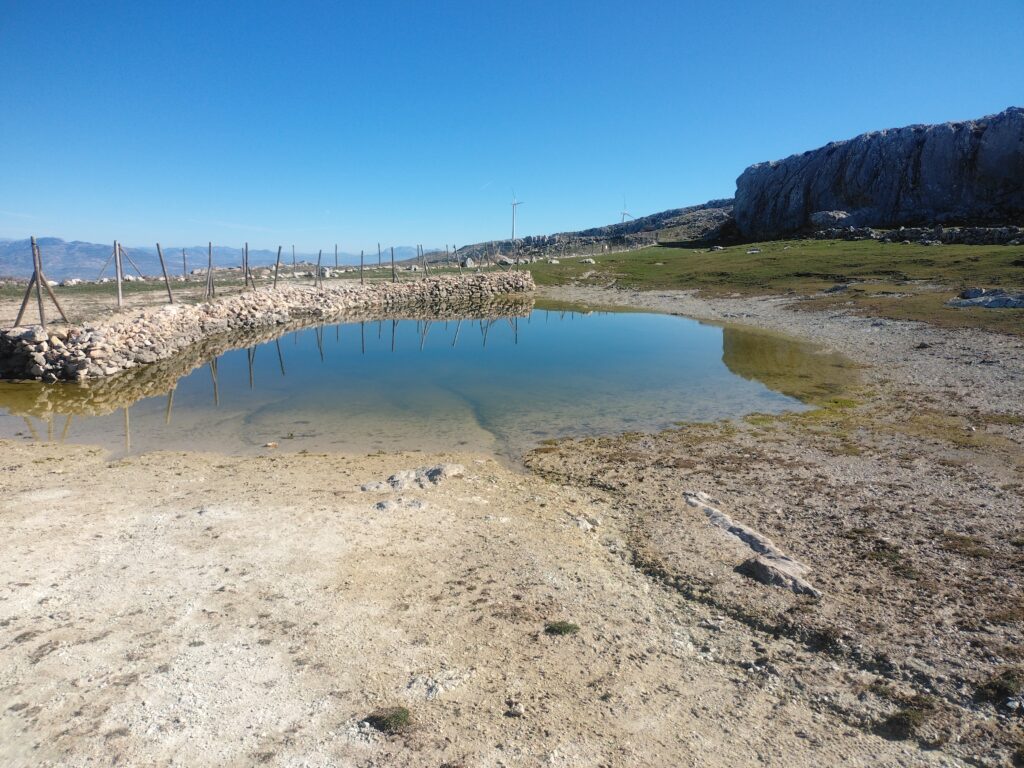

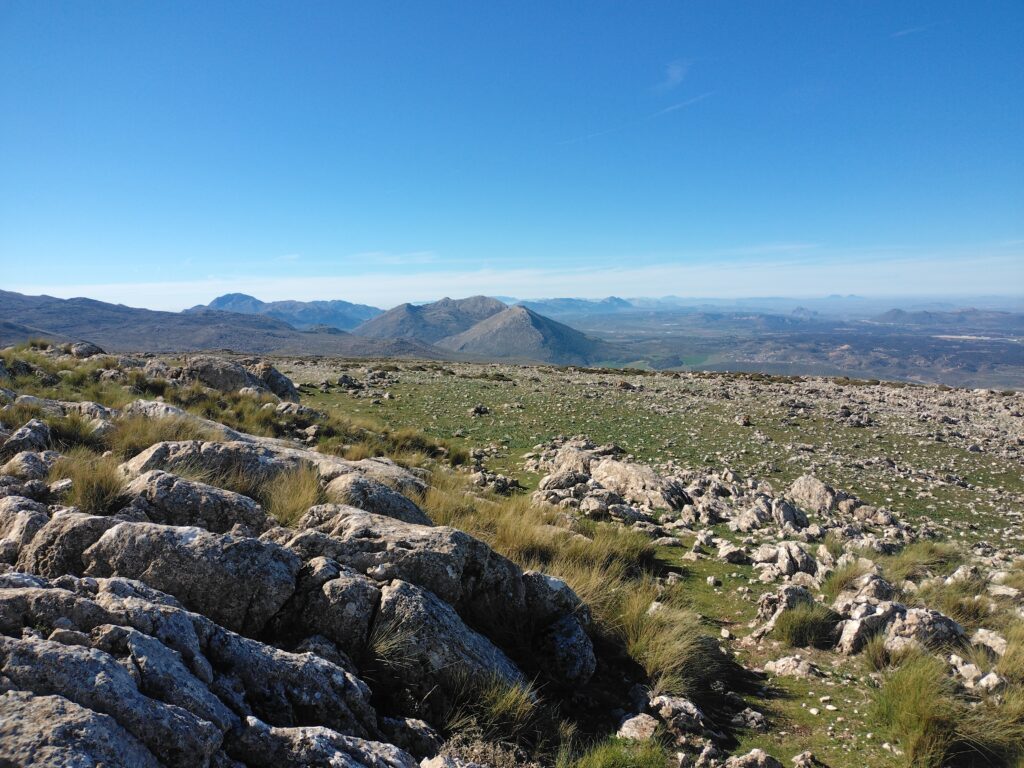
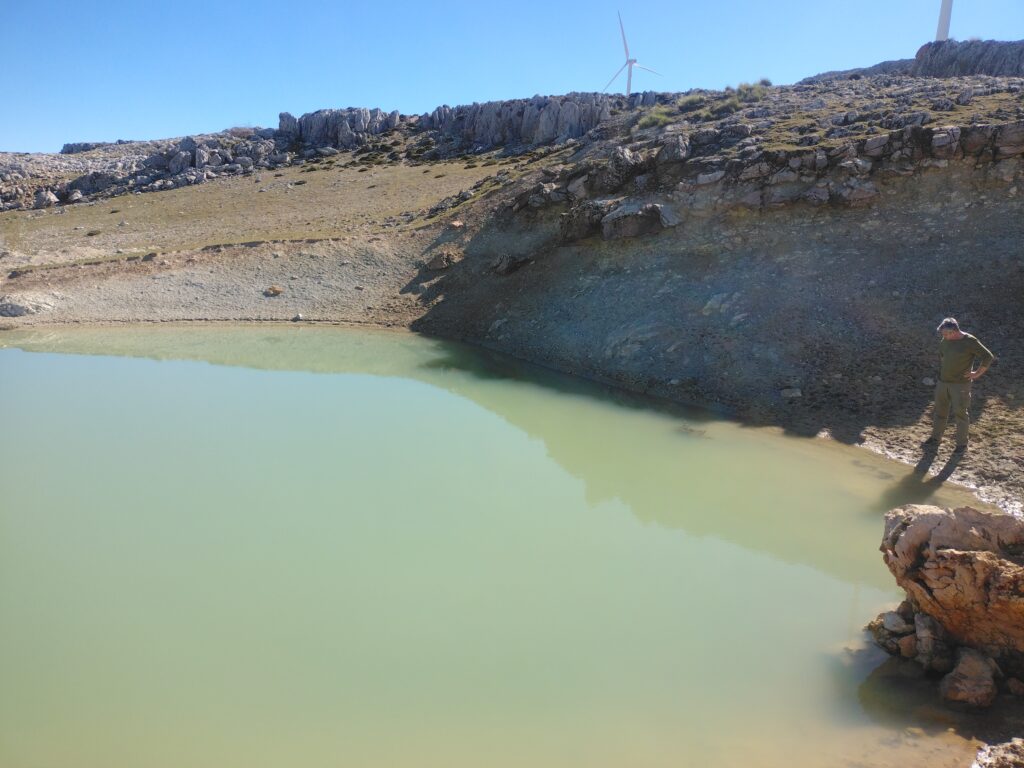

A little disappointed and worried about finding dead newts, we moved to the south, where our friend German was waiting for us. Together we visited an old aqueduct, where there is a good chance of finding reptiles or amphibians, as the aqueduct often becomes a trap for them, into which they fall and find it difficult to get out. At first there were railings and netting around the aqueduct, but later we were just walking on a narrow concrete footbridge and a deep chasm opened below us to the right. First, we found one drowned baby Montpellier snake (Malpolon monspessulanus) and later a live Southern smooth snake (Coronella girondica). Unfortunately, we were unable to find the target species – the Betic midwife toad (Alytes dickhilleni) and the Lataste´s viper (Vipera Latastei).
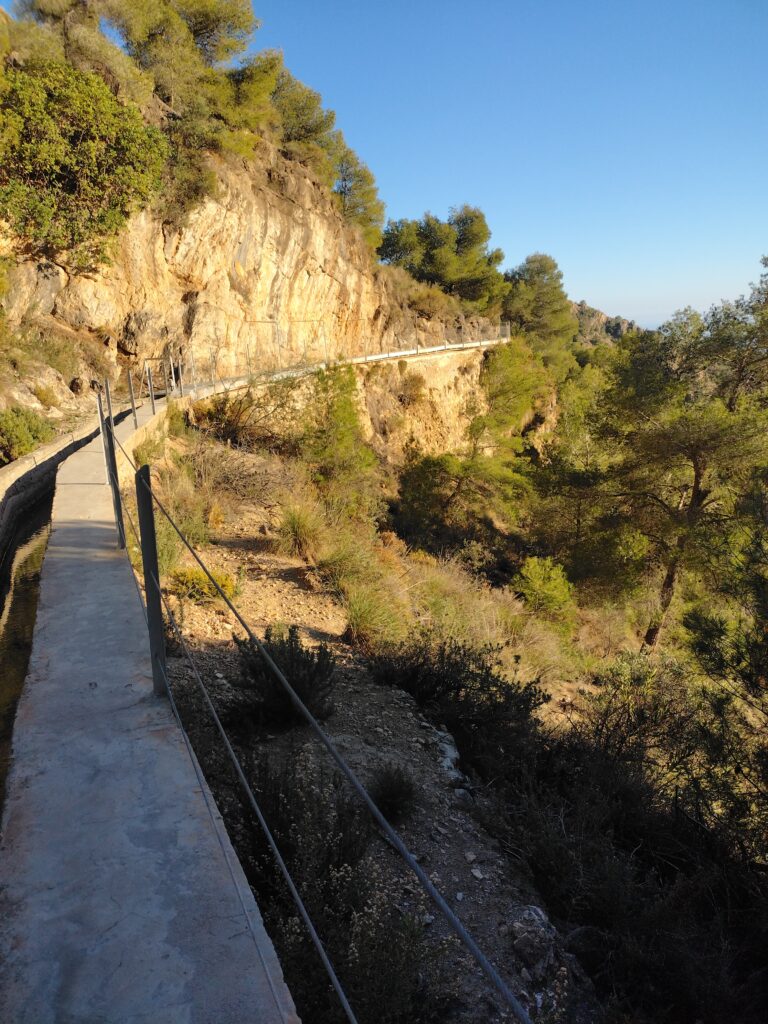


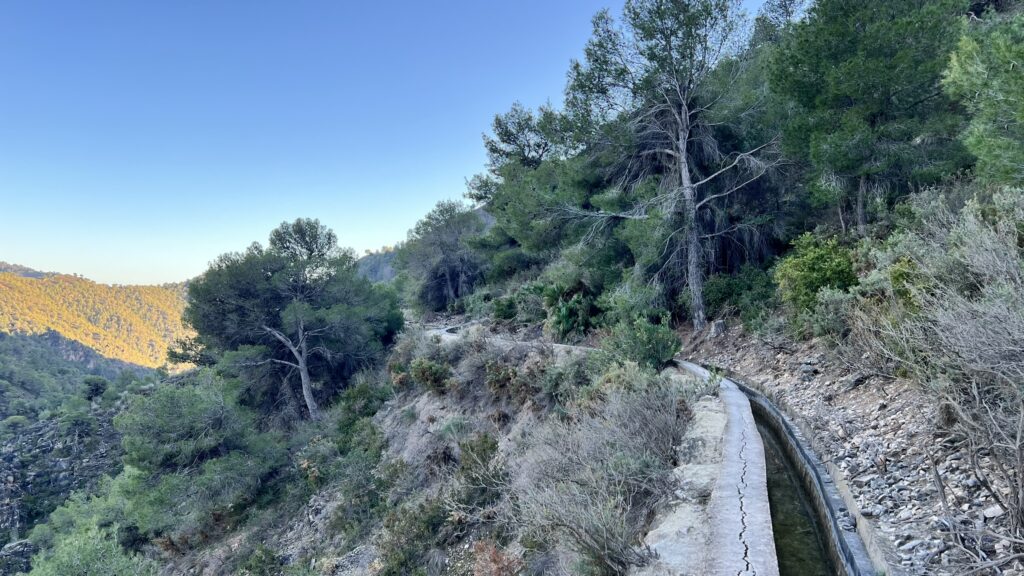

German recommended that we should try to go after the chameleons again after dark. He said that they are definitely active, but during the day it is very difficult to find them. At night, on the other hand, it’s quite easy, because they have a light color when they sleep, which reflects nicely in the light of the flashlight. As it turns out, he was right. A few minutes of searching were enough and we found two young individuals and one adult common chameleon (Chamaeleo chamaeleon). The last one had an alphanumeric code written in marker on it. We later learned that the local university was conducting research on the local population.


The next day we packed up and moved out of our first accommodation. We were heading west to the area around the city of Huelva. We saw a large puddle at a roadside rest stop, so we looked around for a while. We found three individuals of Peréz’s frogs (Pelophylax perezi) in it. We also explored two salamander sites that were right along the road. One had no water at all and the other discouradged us with the amount of human excrement all around. Next, we stopped at the viewpoint of the village of Ronda. It is a “white village” typical for this area, a village of pure white houses located on the slopes of the mountains, often on the very edge of steep rock faces. We also wanted to look around for reptiles here, but the strong tourist pressure has its influence here. The owners preferred to fence off the surrounding land and post entry bans. So we drove a little further, where we could already find suitable places for herping. On one such we came across a large number of Algerian psammodromus (Psammodromus algirus). There were several Natterjack toads (Epidalea calamita) in the wet stony and grassy area at the edge of the pine forest. In our country, this is the most endangered and rarest species of toad. In Spain, on the other hand, it is one of the most common anurans.



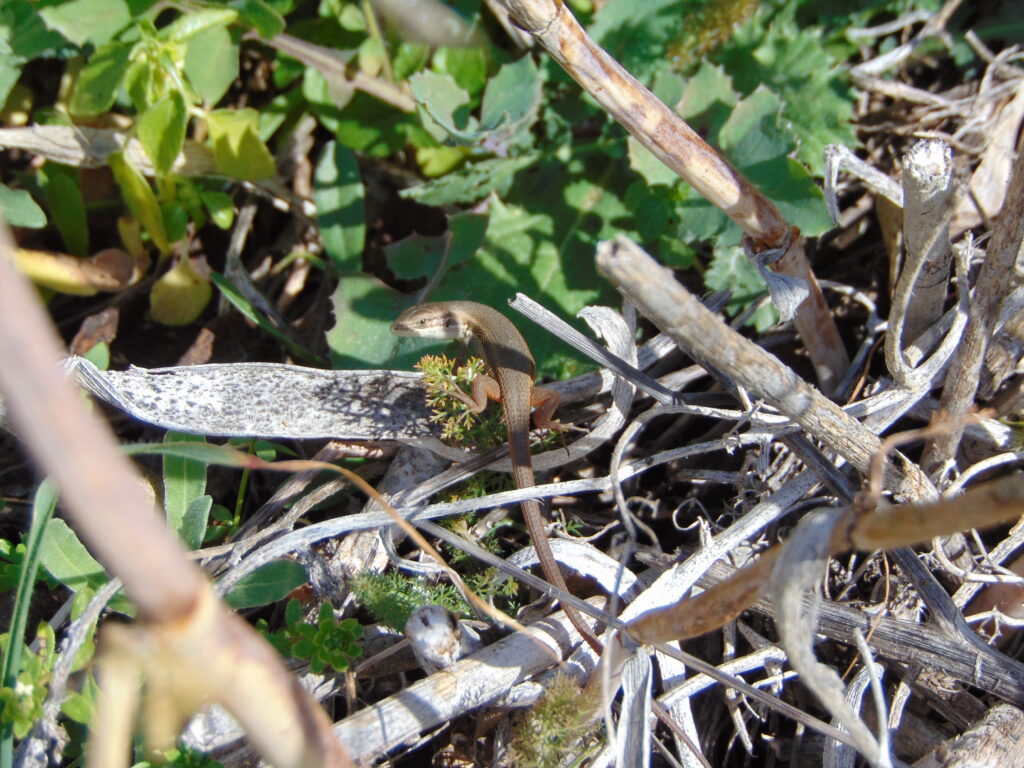

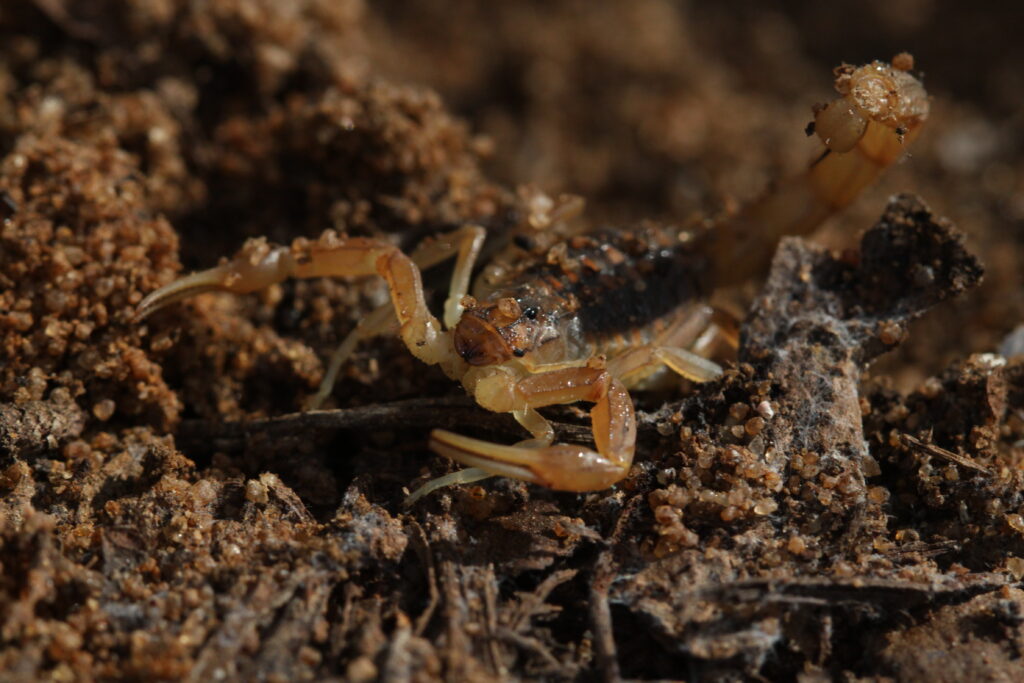
It was already afternoon and hunger forced us to make a short stop for food. We all had small “tapas”, such as avocado with shrimp or lamb skewers, and before long we were on our way again. As we approached the city of Seville on the highway, we started to smell smog. And before long we entered one of the ugliest cities I have ever seen. A thick gray haze of smog hung over the gray city with its huge shipping docks. The historic center of Seville is of course beautiful, which is why it is often referred to as one of the most beautiful cities in Spain. But the view from the highway shows something else. We were glad that we didn’t book accommodation near the big city, but right on the coast, in the town of Punta Umbria, located at the end of a small peninsula. This time we had an appointment with the owner of the apartment, who gave us the keys. After settling in, we bought supplies and went to the nearby lakes in the pine forest. The air humidity was high, from which we promised ourselves a rich amount of frogs. Unfortunately, for unknown reasons, we only found one Natterjack toad within a few hours. Most of the lakes were dry. In two surprisingly small lakes, where there was still some water left, tadpoles of western Spadefoot toads (Pelobates cultripes) and also larvae of the Iberian ribbed newt (Pleurodels waltl) were swimming. However, we did not manage to find adults of either species.


Western spadefoot toad (Pelobates cultripes) tadpole. Photo: Jan Machek


The next morning we moved to the Doñana National Park, where we wanted to look for the Lataste´s viper (Vipera latastei) and also for newts, which have been found here in the past. This is a completely unique area of sand dunes, pine forests and wetlands. Unfortunately, these are drying up due to climate change and mainly due to excessive pumping of groundwater by legal and illegal wells. Nevertheless, we can still find a number of interesting species of wetland birds here. The area is also important for the occurrence of the endangered Iberian lynx (Lynx pardinus).

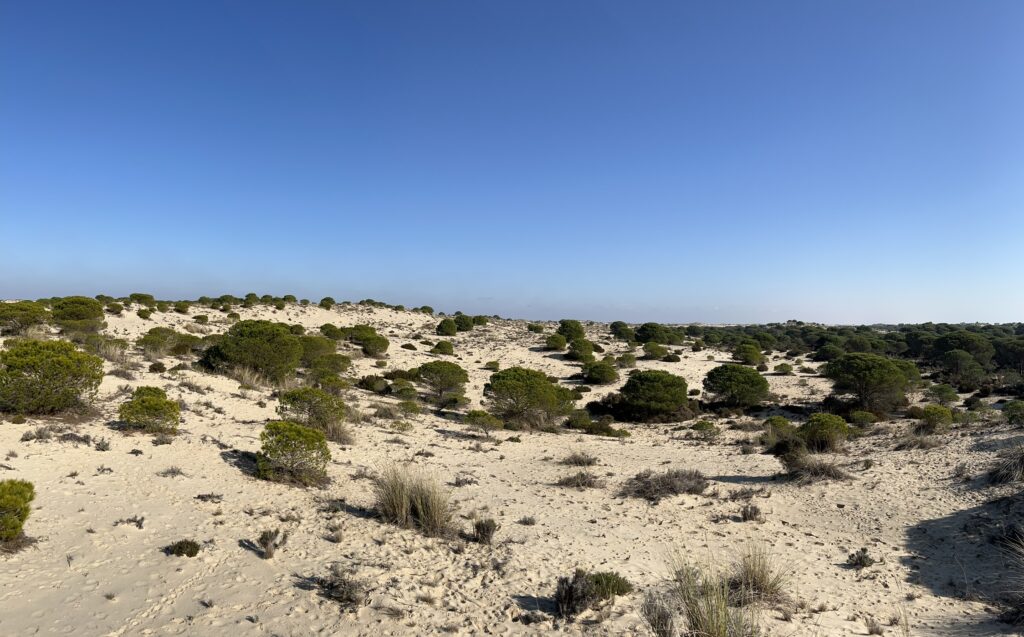

At first we had a bit of a problem finding the entrance to the fenced park, but we managed in the end. We saw no sign anywhere prohibiting anything, except the entry of motor vehicles without authorization, so we boldly walked towards the dunes. Along the way, we met various invertebrates, e.g. termites under an old fiber board or scarabs rolling their excremetn balls. Of the reptiles, we saw only a few Algerian psammodromuses (Psammodromus algirus) and one Andalusian lizard (Podarcis vaucheri). We headed to the small lakes that we had previously found on the satellite maps. It was no surprise that the original large body of water had long since dried up, but water still held at its edge in an artificial depression. However, there was no life in it except for invertebrates. Same for the two other small bodies of water. In the end, we gave up our search for newts and on the way back, we just looked at the bushes growing around to see if there was a snake basking near them. The journey across the dune was challenging and we were already looking forward to returning to solid ground. Suddenly we heard the sound of a car, and after a while a terrain vehicle of the park rangers appeared. Two guards immediately got out and asked us if we had authorization to be in a protected part of the park. One of them could speak English just a little, but overall we understood that in some places we had to cross the boundaries of the protected no-go zone. We explained to them that we didn’t see any signs anywhere and we certainly didn’t climb over the fence, which they were quite surprised about. It is true that in one place we crossed something what looked like the remains of a fence. In the end, they just informed us that they had to escort us out of the park and showed us the way. Unfortunately, there was no gate in these places, so we actually had to climb over the fence.










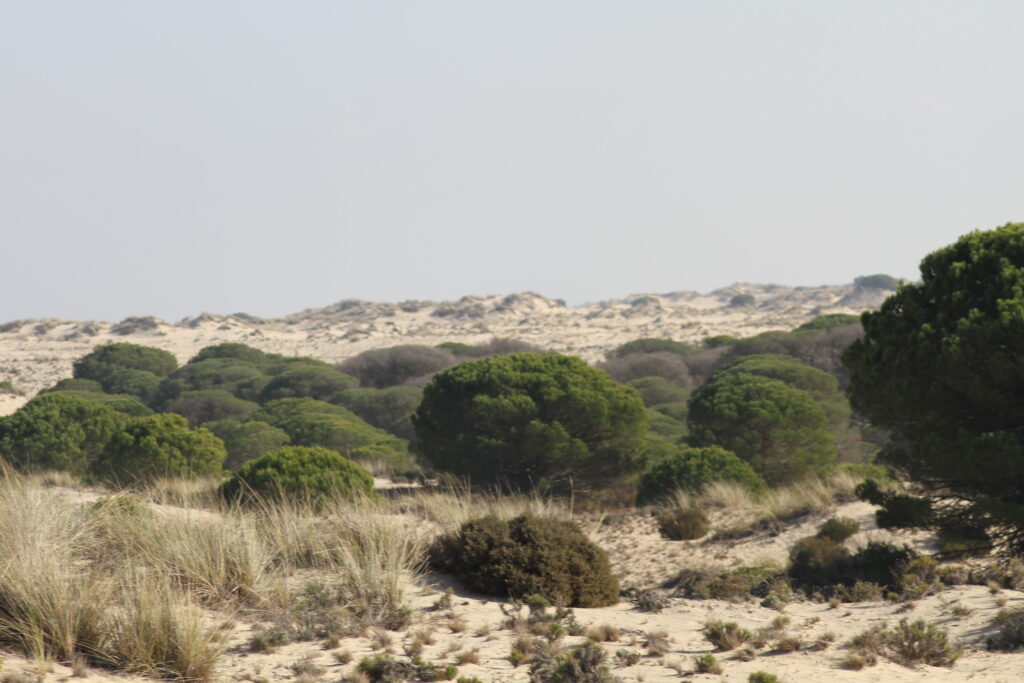
A little disappointed that we didn’t find much, we headed back home. But we definitely do not regret visiting this unique place. Tonda found a lake in the maps along the way, we didn’t give it much hope, but it wasn’t a big detour, so we agreed to try to look there. And we did well. As soon as we got out of the car, we heard the voices of frogs, which got louder as we approached the pond. They were the voices of Pelophylax perezi. It didn’t take long before we saw the first newt. It was a Pygmy marbled newt (Triturus pygmaeus) and in total we later saw about twenty individuals. The Iberian newt (Lissotriton boscai) was a little less numerous here. However, we also observed one paedomorphic individual of this species. It seemed to us that sometimes we could see a larger silhouette in the water, which could belong to a Ribbed newt, but most likely it was only a full-grown female of Pygmy mabred newt, filled with eggs. Satisfied, we set off on our way, but we still tried our luck and stopped at the location from the night before. Although we did not manage to see an adult Ribbed newt again, we did at least find a beautiful Western tree frog (Hyla meridionalis).










The last day of our expedition spent in the field awaited us. We went north to the western end of the Sierra Morena mountain range, which is home to one of the subspecies of the spotted salamander – Salamandra salamandra morenica. When we stopped in an interesting river canyon on the way, I discovered that the second battery for my camera was not working and the camera was reporting about 10 minutes of battery life. I was mad at myself for not bringing the charging cables this time and for not trying the second battery in the evening. In the end, the situation was saved by Tonda, who had a micro USB cable with him, which fortunately made possible to charge the camera in the car. Although it was still quite early in the afternoon, we went straight to the salamander location so we could explore it in the daylight. In the small stream, we immediately found several salamander larvae and also adult Iberian newts (Lissotriton boscai).

There was still plenty of time left before dark, so we used the iNaturalist app to find nearby locations suitable for looking for reptiles. In the old oak forest, there was supposed to be a population of the Lataste´s viper. We searched fairly thoroughly, but the weather didn’t play too well for us as the sky clouded over and the temperature began to drop. We managed to find only a few European worm lizards (Blanus cf. cinereus).


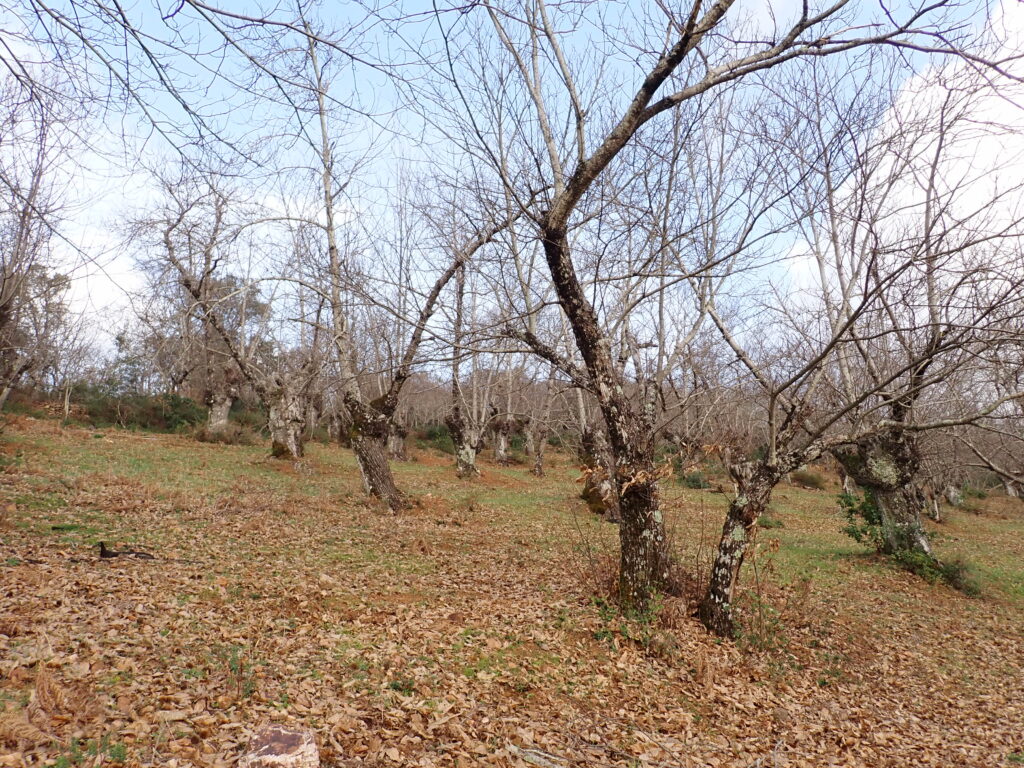
Before dark, we wanted to stop in a nearby historic town for one last good dinner. We weaved our way through the narrow streets until we finally arrived at the place. The bar was open, but the local regulars shook their heads when we told them we wanted something to eat. We were about to return to the car, when a sympathetic bearded owner ran out of the entrance and offered to prepare some food for us. And so we enjoyed local cheese, scrumbled eggs with mushrooms and meat products from local acorns fed pigs.



Well fed, we arrived at the salamander location. First, we heard the voice of several male Iberian midwife toads (Alytes cisternasii), but as is often the case with midwife toads, we were unable to locate them. Afterwards, Tonda found a beautiful, orange-colored Southern smooth snake by the side of the road, which was lying in wait for its prey. It didn’t take long and we also managed to find two huge female of the Sierra morena fire salamanders. The name of this subspecies is derived from the Sierra Morena mountain range, of which it is endemic. They are relatively robust salamanders with smaller yellow spots and deep red coloring all over the body, but especially on the head, typically on and around the parotids. I already observed these salamanders in 2019 during a trip to Portugal, where they may have been a transitional hybrid form of Salamandra s. morenica x Salamandra s. gallaica. However, genetic data to determine the hybrid zone between these two subspecies is missing or has not yet been published.






On the last day, we only had a long crossing back to Malaga. Southern Spain is herpetologically one of the most interesting regions of Europe. Although we found all the target species of tailed amphibians, there are still a quite high number of frogs and reptiles that we did not see. And that’s we are going to come back!
List of species:
Total (20 taxa)
Amphibians (10 taxa)
Caudata (5 taxa)
Lissotriton boscai
Pleurodeles waltl
Triturus pygmaeus
Salamandra salamandra morenica
Salamandra longirostris
Frogs and toads (5 species)
Pelobates cultripes – pulci
Pelophylax perezi
Hyla meridionalis
Epidalea calamita
Alytes cisternasii – pouze akusticky
Reptiles (10 species)
Amphisbaenians (1 species)
Blanus cf. cinereus
Lizards (6 species)
Hemidactylus turcicus
Tarentola mauritanica
Podarcis vaucheri
Psammodromus hispanicus
Psammodromus algirus
Chamaeleo chamaeleon
Snakes (2 species)
Coronella austriaca
Malpolon monspesulanus
Turtles (1 species)
Mauremys leprosa
